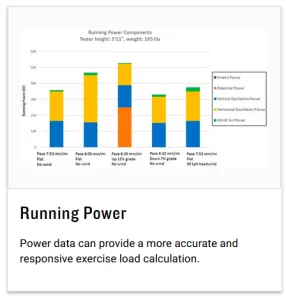 Garmin WRIST Running Dynamics – Which models will get it?
Garmin WRIST Running Dynamics – Which models will get it?
Garmin Running Dynamics are already available for a large number of Garmin watches but some of the metrics require you to wear either an RD-POD (Running Dynamics Pod) or a top-end chest strap like the Garmin HRM-PRO Plus. (or Pro, Run or TRI)
Changes Already Made to Running Dynamics
For quite some time now, it has been possible to determine CADENCE solely from your watch’s movement on your wrist as you swing your arm. If a pod or chest strap was present then that source was favoured as it’s more accurate.
Similarly calculating stride length. Distance is usually determined by GPS and the calculation to give stride length from a combination distance and cadence is a pretty simple one.


via @Testy
What About Running Power?
Ah. Indeed so.
Recently Garmin added Running Power calculated solely from wrist measurements to the Forerunner 255, Forerunner 955, fenix 7, epix (Gen 2), and Enduro 2. As you can see from Garmin’s table below, it must be the case that the components of Vertical Oscillation and Ground Contact Time are already calculated for wrist-based running power.
Thus it’s perhaps no surprise when we see that the soon-to-be-announced Garmin Forerunner 265 (and 265s) plus the Garmin Forerummber 965 both get wrist-based running dynamics.
Garmin Watches That Should Get Wrist-Based Running Dynamics
The running power feature is already included in these Garmin watches and so they already have all the bits needed for the complete suite of running dynamics from the wrist:
- Forerunner 255
- Forerunner 955
- fenix 7
- epix (Gen 2)
- Enduro 2
- the new Forerunner 265, Forerunner 265s and Forerunner 965. Probably also Instinct 2/2S (@rui).
Limitation
As always, if you want more accurate information then you need to get the right sensor to measure the inputs.
Wrist-based calculation generally won’t be as accurate as calculations made from other places; one simple explanation is that you can run for short periods without swinging your arm.
However, for VO and GCT, it’s probably not worth bothering about for most people as these metrics are of limited regular use. Put another way, it’s great that Garmin add them for free to the wrist without needing to buy another sensor 😉


They used to have the light version of running dynamics from the wrist with a lot fewer points plotted and fewer graphs.
How the hell do they collect right/left balance from the wrist? That’s amazing. I find the RD-pod had trouble with R/L balance if you don’t place it exactly right or bump it futzing with your phone in a hip pocket or adjusting your long tights, it can suddenly go 53/47 easily. The HRM-based dynamics versions don’t do that.
Maybe Garmin can collect all these metrics from the wrist (and they should) but the data looks noisy. Optical HR we know is noisy. All sorts of things can goof up the other metrics on the wrist. Think like a thick patch of trees or a tunnel. Running with a bottle or taking your long top off and running with it in your hand.
Probably 99% of runners will be happy with the newfound tons of colorful graphs and share them with their buddies over a post-run coffee. Garmin should do that. Some people will upgrade for the cool screen and more cool GCM graphs they didn’t have before.
On the other hand, I think the HRM-Pro plus is probably a really important 1st party Garmin accessory if you want to take these metrics seriously.
yep, agreed to all of that.
LR balance: I guess when the right hand is up the left leg is back, doesn’t sound so hard. maybe I’m missing something
Well… there are several joints and squishy bits between your foot and flailing wrist.
Extracting meaningful data from the wrist swinging around seems impressive to me. But especially accurate left/right motion bias.
Instinct 2/2S also have running power from the wrist in the latest beta, not sure when it will hit the streets though.
good point, ty
I’m not of the belief that this is a good thing. I have the 955 and the power estimates make no sense and are clearly inaccurate, inconsistent guesses. You might say that I can just ignore them, but it messes up my Training Peaks’.
When power is included, TP will use that to estimate TSS by default and it then thinks I’m over training. So now I have to manually switch it back to rTSS for the calculation on every run.
yup.
use STRYD and hope its battery doesn’t run out.